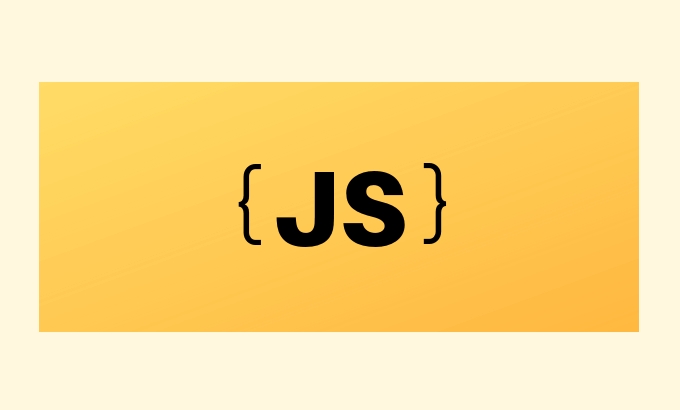Explaining Async/Await Patterns in Modern Javascript Development
Jul 08, 2025 am 01:57 AMasync/await is the way to handle asynchronous operations in JavaScript. Its core is to encapsulate Promise, making the code more intuitive. 1. The async function returns a Promise, and await is used to wait for the Promise to complete; 2. Use try/catch to catch errors, and you can manually throw exceptions according to the status code and handle them accordingly; 3. You can perform multiple tasks concurrently in conjunction with Promise.all to improve efficiency; 4. Be careful to avoid abuse of await and cause serial requests. You cannot directly use await in the top-level scope, and understand the error propagation mechanism.

Async/await is a very intuitive and concise way to handle asynchronous operations in modern JavaScript development. It is essentially a layer of encapsulation of Promise, making asynchronous code look more like synchronous code, making it easier to understand and maintain.

What is async/await?
Simply put, the async function is a function that returns a promise, and the await keyword can only be used inside the async function and is used to "wait" for a promise to complete. This can avoid the nesting and readability problems caused by traditional .then() and .catch() chain calls.

Let's give a simple example:
async function fetchData() {
const response = await fetch('https://api.example.com/data');
const data = await response.json();
return data;
} In this example, we wait for the network request to be completed through await , instead of using .then() to process the result. This method is clear and more in line with people's reading habits.

How to correctly handle errors using try/catch?
Although async/await makes the code look more synchronous, the nature of asynchronous has not changed, so error handling is still important. The recommended approach is to wrap the await operation in try/catch block, so that exceptions can be caught in the event of an error.
async function getUserData(userId) {
try {
const response = await fetch(`https://api.example.com/users/${userId}`);
if (!response.ok) throw new Error('Request failed');
return await response.json();
} catch (error) {
console.error('Failed to obtain user data:', error);
// You can choose to throw an error or return the default value throw error;
}
}- Using
try/catchis standard practice. - An error can be thrown manually according to the response status code.
- After the error is captured, you can do logging, UI prompts, etc.
Use async/await with Promise.all
Promise.all is still a very useful tool when you need to execute multiple asynchronous tasks concurrently and wait for them to complete. Combined with async/await, the code can be both efficient and clear.
async function getMultipleUsers(ids) {
try {
const promises = ids.map(id => fetch(`https://api.example.com/users/${id}`));
const responses = await Promise.all(promises);
const users = await Promise.all(res => res.json()));
return users;
} catch (error) {
console.error('Batch fetching user failed:', error);
}
}The benefits of this writing are:
- All requests are carried out concurrently, with high efficiency;
- Process the response and parse JSON respectively through two
await; - Any failure will trigger
catch.
Notes and common misunderstandings
Although async/await is very convenient, there are some easy places to get stuck:
Don't abuse await : If there is no dependency between multiple asynchronous operations, you should execute concurrently instead of serial waiting.
? Not recommended:
const a = await getA(); const b = await getB(); // In fact, it can be initiated at the same time as getA
? Recommended:
const [a, b] = await Promise.all([getA(), getB()]);
Await cannot be used directly in the top-level scope :
awaitcannot be used directly in ordinary functions or global scopes, but can only be used inasyncfunctions.Note the error propagation mechanism : Exceptions not caught by
try/catchwill become unhandled Promise rejection, which may cause the program to crash.
Basically that's it. async/await is not complicated, but to really use it well, you still have to understand the Promise mechanism behind it and how to reasonably organize the asynchronous process.
The above is the detailed content of Explaining Async/Await Patterns in Modern Javascript Development. For more information, please follow other related articles on the PHP Chinese website!

Hot AI Tools

Undress AI Tool
Undress images for free

Undresser.AI Undress
AI-powered app for creating realistic nude photos

AI Clothes Remover
Online AI tool for removing clothes from photos.

Clothoff.io
AI clothes remover

Video Face Swap
Swap faces in any video effortlessly with our completely free AI face swap tool!

Hot Article

Hot Tools

Notepad++7.3.1
Easy-to-use and free code editor

SublimeText3 Chinese version
Chinese version, very easy to use

Zend Studio 13.0.1
Powerful PHP integrated development environment

Dreamweaver CS6
Visual web development tools

SublimeText3 Mac version
God-level code editing software (SublimeText3)

Hot Topics
 Java vs. JavaScript: Clearing Up the Confusion
Jun 20, 2025 am 12:27 AM
Java vs. JavaScript: Clearing Up the Confusion
Jun 20, 2025 am 12:27 AM
Java and JavaScript are different programming languages, each suitable for different application scenarios. Java is used for large enterprise and mobile application development, while JavaScript is mainly used for web page development.
 Javascript Comments: short explanation
Jun 19, 2025 am 12:40 AM
Javascript Comments: short explanation
Jun 19, 2025 am 12:40 AM
JavaScriptcommentsareessentialformaintaining,reading,andguidingcodeexecution.1)Single-linecommentsareusedforquickexplanations.2)Multi-linecommentsexplaincomplexlogicorprovidedetaileddocumentation.3)Inlinecommentsclarifyspecificpartsofcode.Bestpractic
 How to work with dates and times in js?
Jul 01, 2025 am 01:27 AM
How to work with dates and times in js?
Jul 01, 2025 am 01:27 AM
The following points should be noted when processing dates and time in JavaScript: 1. There are many ways to create Date objects. It is recommended to use ISO format strings to ensure compatibility; 2. Get and set time information can be obtained and set methods, and note that the month starts from 0; 3. Manually formatting dates requires strings, and third-party libraries can also be used; 4. It is recommended to use libraries that support time zones, such as Luxon. Mastering these key points can effectively avoid common mistakes.
 Why should you place tags at the bottom of the ?
Jul 02, 2025 am 01:22 AM
Why should you place tags at the bottom of the ?
Jul 02, 2025 am 01:22 AM
PlacingtagsatthebottomofablogpostorwebpageservespracticalpurposesforSEO,userexperience,anddesign.1.IthelpswithSEObyallowingsearchenginestoaccesskeyword-relevanttagswithoutclutteringthemaincontent.2.Itimprovesuserexperiencebykeepingthefocusonthearticl
 JavaScript vs. Java: A Comprehensive Comparison for Developers
Jun 20, 2025 am 12:21 AM
JavaScript vs. Java: A Comprehensive Comparison for Developers
Jun 20, 2025 am 12:21 AM
JavaScriptispreferredforwebdevelopment,whileJavaisbetterforlarge-scalebackendsystemsandAndroidapps.1)JavaScriptexcelsincreatinginteractivewebexperienceswithitsdynamicnatureandDOMmanipulation.2)Javaoffersstrongtypingandobject-orientedfeatures,idealfor
 JavaScript: Exploring Data Types for Efficient Coding
Jun 20, 2025 am 12:46 AM
JavaScript: Exploring Data Types for Efficient Coding
Jun 20, 2025 am 12:46 AM
JavaScripthassevenfundamentaldatatypes:number,string,boolean,undefined,null,object,andsymbol.1)Numbersuseadouble-precisionformat,usefulforwidevaluerangesbutbecautiouswithfloating-pointarithmetic.2)Stringsareimmutable,useefficientconcatenationmethodsf
 What is event bubbling and capturing in the DOM?
Jul 02, 2025 am 01:19 AM
What is event bubbling and capturing in the DOM?
Jul 02, 2025 am 01:19 AM
Event capture and bubble are two stages of event propagation in DOM. Capture is from the top layer to the target element, and bubble is from the target element to the top layer. 1. Event capture is implemented by setting the useCapture parameter of addEventListener to true; 2. Event bubble is the default behavior, useCapture is set to false or omitted; 3. Event propagation can be used to prevent event propagation; 4. Event bubbling supports event delegation to improve dynamic content processing efficiency; 5. Capture can be used to intercept events in advance, such as logging or error processing. Understanding these two phases helps to accurately control the timing and how JavaScript responds to user operations.
 What's the Difference Between Java and JavaScript?
Jun 17, 2025 am 09:17 AM
What's the Difference Between Java and JavaScript?
Jun 17, 2025 am 09:17 AM
Java and JavaScript are different programming languages. 1.Java is a statically typed and compiled language, suitable for enterprise applications and large systems. 2. JavaScript is a dynamic type and interpreted language, mainly used for web interaction and front-end development.






